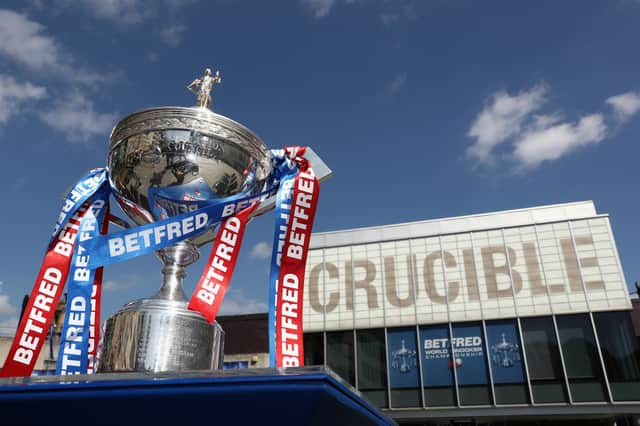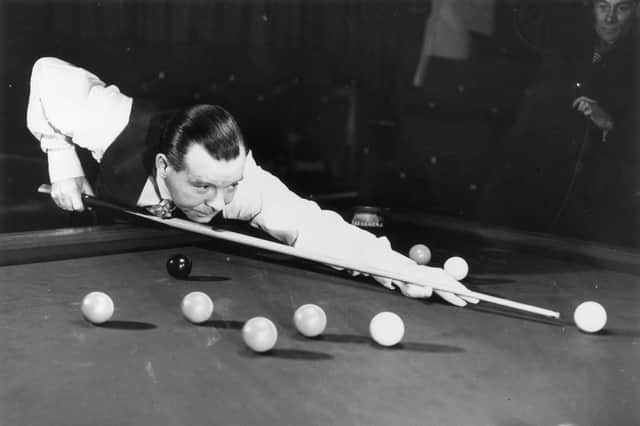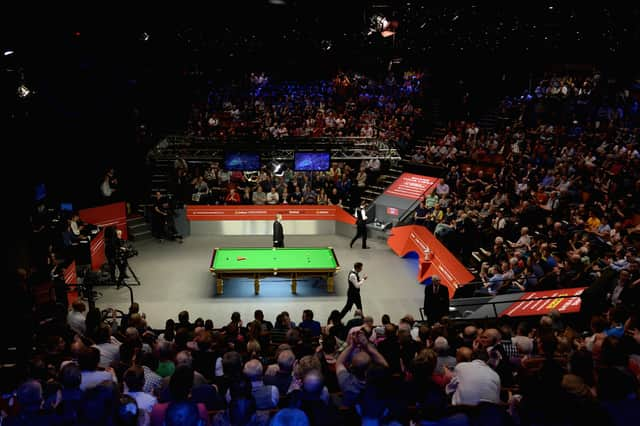A Potted History of the World Snooker Championship


The World Snooker Championship is the sport’s blue riband event, the ultimate prize that every aspiring player dreams about winning.
First won by the sport’s original superstar Joe Davis in 1927, the history of the World Snooker Championship can be broken down into two distinctive eras either side of the late 1960s.
Advertisement
Advertisement
The Early Decades of the World Snooker Championship (1927 to late 1960s)
The World Snooker Championship was a very different proposition to what we know today, as the sport tried to establish itself and move away from the shadow of its big cuesports brother English Billiards.
Only a handful of players used to enter the Championship, and in some years just two players registered, meaning only a final was played. In 1928, there were effectively qualifying rounds where the winner challenged reigning champion Joe Davis in the final for the title.


Often, the length of matches was longer - and in a lot of cases, considerably longer - than what we see in today's current format, with contests often taking several days to complete. Even then, 'dead' frames were still played for the audience despite a player having already reached the winning target.
The tournament itself could also take several months to complete, with multiple venues hosting matches in different rounds - almost like a snooker roadshow.
Advertisement
Advertisement
Whilst the dominant format for the event was a straight knockout, there was a spell between 1964 to 1968 where the champion defended his title in one-off 'challenge' matches. John Pulman was undefeated in these, winning all seven that were played.
In the early 1950s, there was a difference of opinion and a split between the players about how the competition should be run, and in 1952 there were effectively two different world championships held, with one being titled the World Professional Match-play Championship that stayed in existence for several years.
Many grand venues in towns and cities across England hosted World Snooker Championship matches. From the first final venue of Camkin's Hall, Birmingham to Leicester Square Hall, London to the Tower Circus, Blackpool - and a plethora of other establishments in between.
The Championship wasn't restricted to English shores either, with venues in Jersey and South Africa receiving the honour of holding the sport's most prestigious fixture.
Advertisement
Advertisement
The early chapters of the World Snooker Championship were very inconsistent. Organisers faced struggles - the event didn't even take place between 1958 to 1963 due to a lack of interest - but they helped lay the foundations for the show we know and love today.


The World Snooker Championship in the Modern Era and at the Crucible Theatre
Following the spell of challenge matches for the world title in the 1960s, the World Snooker Championship went back to a straight knockout format in 1969 and it has remained this way since (except for the 1971 event that also featured a groups phase).
It is reasonable to suggest that this is when the 'modern era' of the sport began, as it also coincided with the birth of the Pot Black tournament televised by the BBC in the United Kingdom. This helped create more interest from fans and opportunities for players.
From the 1973 edition onwards, the Championship schedule became condensed and was completed in just a few weeks instead of the several weeks or months that had been the programme before.
Advertisement
Advertisement
The Championship continued to move about - even Australia twice hosted it in the 1970s - but all that changed in 1977 when the Crucible Theatre became its permanent home.
Carol Watterson, the wife of revered sports promoter Mike Watterson, went to the Crucible Theatre in Sheffield to watch a play. Impressed by the venue, she suggested to her husband that it would be an ideal setting for hosting a snooker event. Mike agreed and managed to get the world championship staged there. It would become a very big hit.
The genius move to the intimate Yorkshire venue helped spark a huge popularity boom for the sport which led to increased television and media coverage, and resulted in more events, money and fame for the players.
The Crucible has remained the home of the World Snooker Championship, with the event being held there every year since 1977. The local community and surrounding area embraces the international attention it receives, and together with support from the Sheffield Council, a contract to stay there is in place until 2027 – 50 years on from its inaugural staging and 100 years on from the first crowning of Joe Davis.